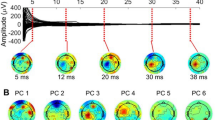Abstract
The conjugate gradient method is a prominent technique for solving systems of linear equations and unconstrained optimization problems, including adaptive filtering. Since it is an iterative method, it can be particularly applied to solve sparse systems which are too large to be handled by direct methods. The main advantage of the conjugate gradient method is that it employs orthogonal search directions with optimal steps along each direction to arrive at the solution. As a result, it has a much faster convergence speed than the steepest descent method, which often takes steps in the same direction as earlier steps. Furthermore, it has lower computational complexity than Newton’s iteration approach. This unique tradeoff between convergence speed and computational complexity gives the conjugate gradient method desirable properties for application in numerous mathematical optimization problems. In this paper, the conjugate gradient principle is applied to complex adaptive independent component analysis (ICA) for maximization of the kurtosis function, to achieve separation of complex-valued signals. The proposed technique is called the complex block conjugate independent component analysis (CBC-ICA) algorithm. The CBC-ICA derives independent conjugate gradient search directions for the real and imaginary components of the complex coefficients of the adaptive system employed for signal separation. In addition, along each conjugate direction an optimal update is generated separately for the real and imaginary components using the Taylor series approximation. Simulation results confirm that in dynamic flat fading channel conditions, the CBC-ICA demonstrates excellent convergence speed and accuracy, even for large processing block sizes.
Similar content being viewed by others
References
E. Bingham, A. Hyvarinen, A fast fixed-point algorithm for independent component analysis of complex valued signals. Int. J. Neural Syst. 10(1) (2000)
E. Bingham, A. Hyvarinen, ICA of complex valued signals: a fast and robust deflationary algorithm, in Proc. IEEE-INNS-ENNS International Joint Conf. on Neural Networks, July 2000, pp. 357–362
G.K. Boray, M.D. Srinath, Conjugate gradient techniques for adaptive filtering. IEEE Trans. Circuits Syst. 39(1), 1–10 (1992)
T. Bose, M.Q. Chen, Conjugate gradient method in adaptive bilinear filtering. IEEE Trans. Signal Process. 43, 1503–1508 (1995)
J. Erhel, F. Guyomarc’h, An augmented conjugate gradient method for solving consecutive symmetric positive definite systems. SIAM J. Matrix Anal. Appl. 21(4), 1279–1299 (2000)
L. Giraud, D. Ruiz, A. Touhami, A comparative study of iterative solvers exploiting spectral information for SPD systems. SIAM J. Sci. Comput. 27(5), 1760–1786 (2006)
A. Hyvarienen, J. Karhunen, E. Oja, Independent Component Analysis (Wiley, New York, 2001)
A. Hyvarinen, Fast and robust fixed-point algorithms for Independent Component Analysis. Proc. IEEE 10(3), 626–634 (1999)
A. Hyvarinen, E. Oja, A fast fixed-point algorithm for Independent Component Analysis. Neural Comput. 9(7), 1483–1492 (1997)
R. Ranganathan, W.B. Mikhael, Fast-converging complex adaptive algorithm for diversity wireless receivers in linearly fading channels. IEE Electron. Lett. 42(15), 886–887 (2006)
R. Ranganathan, W.B. Mikhael, A novel interference suppression technique employing complex adaptive ICA for time-varying channels in diversity wireless QAM receivers, in Proc. IEEE International Symposium on Circuits and Systems (ISCAS), New Orleans, LA, 27–30 May 2007, pp. 101–104
R. Ranganathan, W.B. Mikhael, A comparative study of complex gradient and fixed-point ICA algorithms for interference suppression in static and dynamic channels. Signal Process. 88(2), 399–406 (2008)
Y. Saad, Iterative Methods for Sparse Linear Systems (SIAM, Philadelphia, 2003)
J.R. Shewchuk, An introduction to the conjugate gradient method without the agonizing pain. http://math.nyu.edu/faculty/greengar/painless-conjugate-gradient.pdf
Author information
Authors and Affiliations
Corresponding author
Rights and permissions
About this article
Cite this article
Mikhael, W.B., Ranganathan, R. & Yang, T. Complex Adaptive ICA Employing the Conjugate Gradient Technique for Signal Separation in Time-Varying Flat Fading Channels. Circuits Syst Signal Process 29, 469–480 (2010). https://doi.org/10.1007/s00034-010-9156-x
Received:
Revised:
Published:
Issue Date:
DOI: https://doi.org/10.1007/s00034-010-9156-x




